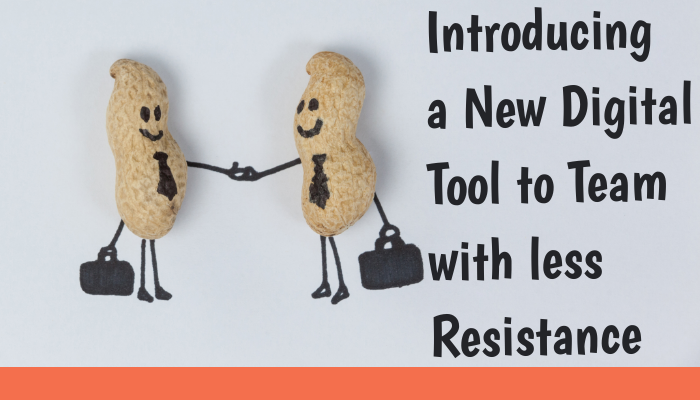Introducing a New Digital Tool to Team with Less Resistance
Overview
Workplace transformation is the most important phenomenon, particularly in light of the volatility in the way of working in the recent turbulence and the rapid change of the business landscape. Organizations and employees need to adapt quickly to the widespread proliferation of information technology, which impacts the way people connect, collaborate, and communicate in the workplace. In order to meet these demands, firms must adopt innovative solutions that may boost employee productivity.
In this template, we will be focusing on providing a few tips for managers to reflect on before introducing a new tool to their team.
Description
As working styles shift from on-premise to remote to hybrid, and as the preferences of a multi-generational workforce shift, there appears to be an ongoing need to evaluate and revisit the capability of the current tool, as well as introduce new tools from time to time. To make sure the change from the old tool to the new tool goes smoothly, managers need to understand and plan for the possibility of resistance and problems during adaptation. They also need to map out a path to a successful transition.
Open-Ended Questions:
1. What kind of resistance do you foresee from your team to accepting this new tool?
a. Resistance to the effort? – I’m comfortable with the current system/process. A new tool would mean more training! I don’t have time for that!
b. Resistance to risk? – What if the tool doesn’t work? What if something goes wrong? Is this tool only going to make my job harder?
c. Resistance to change? – What I’m using right now is not THAT BAD! We are doing ok with that. Then why change? Let us just stick with the existing tools!
2. How are you making sure to ensure a smooth and easy experience for your team and your stakeholders? Do you have a plan to address the following things?
a. Ensuring a user-friendly UI/UX?.
b. Creating different used cases to test and experiment the tool.
c. Communicating why change and how will it help?.
d. Identify and nominate champions who can experiment and act as the ambassadors of the new tool?
e. Plan enough roadshows, and FAQs to address the resistance? (Refer to the previous question to elaborate on your responses.)
f. Planned a series of orientations (both virtual and on-demand) to make the users/stakeholders familiar with the new tool
g. Celebrating successful implementation and sharing positive user experiences
Assessment Questions
1. The tool introduction is simple and straightforward without jargon.
2. I have at least 2 to 3 key features that are directly relevant to my target group and applicable to my company.
3. I have gathered a sufficient number of challenges that my target group might face while adapting to the new tool.
4. I am prepared to address at least the top 5 challenges that my target group might face.
5. I know how to overcome the resistance from my target group about the acceptability of the tool.
6. I have identified and trained my champions, who can influence my target group to use the new tool.
7. I am prepared to answer a few tough questions that my target group might ask me that convey the resistance to change.
8. I have included enough examples of the features of the new tool.
9. I can give my target group a chance to explore the new tool during or just after the orientation.
10. I have a feedback mechanism where I can gather user experience.
11. I have a team to evaluate and work on actions coming from the user feedback.
12. I have a mechanism to communicate back and close the feedback loop with the appropriate actions taken.
Check out more thought-provoking questions for reflection at https://www.fincenti.com
Fincenti is a productivity tool for you and your team for better productivity and engagement based on track your day, reflect for growth, and share/learn.
Do you have suggestions? Please email us at [email protected] or submit a comment below.
Join us at Fincenti Facebook User Group at https://bit.ly/finusergroup for more insights and free templates.
